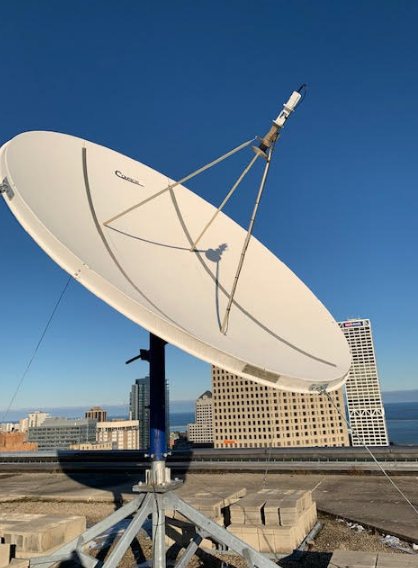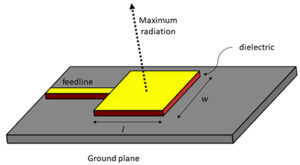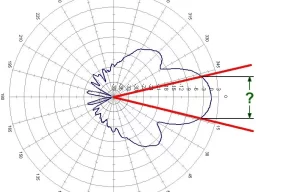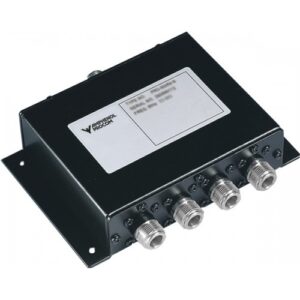Table of Contents
Introduction to Antenna Types
Basic Principles of Antennas
Antennas are crucial components in wireless communication, converting electrical power into radio waves and vice versa. A key parameter, the gain of an antenna, measures its ability to direct radio waves in specific directions. The gain is typically expressed in decibels (dB), indicating the efficiency of an antenna in focusing energy. A high-gain antenna might concentrate energy into a narrow beam, which is ideal for long-distance communication.
Overview of Horn Antennas
Horn antennas, known for their distinctive flaring shape, excel in directing radio waves efficiently. Their gain ranges from 10 to 20 dB, making them suitable for applications requiring moderate to high directivity. The construction of horn antennas involves metallic surfaces that guide the wave to radiate outward, allowing for a clear, focused transmission path. This characteristic leads to their widespread use in microwave and radar technologies. The material used typically includes aluminum, known for its combination of light weight and good conductivity, ensuring both durability and performance.
Overview of Parabolic Dish Antennas
Parabolic dish antennas, characterized by their parabolic-shaped reflector, focus radio waves onto a specific point, achieving high gains of 30 to 40 dB. This focus enables the antenna to capture weak signals from far-off satellites or transmit signals over vast distances. The size of these antennas can vary significantly, with diameters ranging from less than a meter for domestic satellite television reception to several meters in large-scale telecommunications and astronomical observation. The cost of these systems depends on the size and material of the dish, with larger, high-quality materials like high-grade steel or aluminum leading to higher costs due to the enhanced durability and performance they offer.
Both horn and parabolic dish antennas play pivotal roles in modern communication systems, each with distinct advantages based on their design and operating principles. Horn antennas, with their moderate gain and simpler design, offer a cost-effective solution for a range of applications, including feed elements for larger antenna systems like parabolic dishes. Parabolic dish antennas, with their high gain and focus, are indispensable in long-distance communication links, such as satellite communication and deep-space radio communications, where signal strength and directionality are critical.

Design and Structure
Design Features of Horn Antennas
Horn antennas leverage their shape to enhance performance and directivity. The flare angle and length of the horn significantly impact its gain and bandwidth. A typical horn antenna can have a gain ranging from 10 to 20 dB, with the wider flares providing higher gain due to their ability to capture more energy. The materials used in constructing horn antennas, aluminum or copper, are chosen for their excellent conductivity and durability. The simplicity of the horn antenna’s design translates to lower manufacturing costs, with prices varying depending on the size and material, but generally staying within a few hundred dollars for standard models.
Design Features of Parabolic Dish Antennas
Parabolic dish antennas consist of a parabolic reflector and a feed antenna located at the focus of the parabola. The diameter of the parabolic dish is a critical factor that determines its gain and frequency range. Dishes can range in size from less than a meter to several meters, with gains typically between 30 to 40 dB for larger dishes. The choice of material for the dish surface—often aluminum or steel coated with a reflective layer—balances considerations of weight, cost, and durability. Larger parabolic dishes require robust supporting structures to withstand environmental factors, which can significantly increase their overall cost, potentially reaching thousands of dollars for high-performance models.
Comparative Analysis of Structures
The main structural difference between horn and parabolic dish antennas lies in their approach to directing radio waves. Horn antennas use their physical shape to guide waves, while parabolic dishes use reflection to focus signals. This distinction leads to differences in size and weight, with parabolic dishes generally being larger and requiring more support. The material costs for parabolic dishes are higher due to the need for a reflective surface and a sturdy frame. In terms of assembly, horn antennas are simpler and more straightforward, resulting in lower labor costs compared to the more complex assembly and alignment required for parabolic dishes.
The efficiency of a parabolic dish antenna is often higher than that of a horn antenna, as it can focus signals more tightly over long distances. This comes at the cost of increased size and complexity. Horn antennas, with their moderate gain and simpler design, offer a more cost-effective solution for applications that do not require the high directivity and gain of parabolic dishes. The choice between a horn and a parabolic dish antenna depends on the specific requirements of the application, including desired gain, frequency range, and budget constraints.
Advantages and Limitations
Advantages of Horn Antennas
Horn antennas are renowned for their simplicity and ease of construction. Their design does not require the precise alignment needed by more complex antenna types, making them less expensive to manufacture. The cost-effectiveness of horn antennas stems from their straightforward manufacturing process and the use of affordable materials like aluminum. They exhibit moderate gain levels between 10 to 20 dB, suitable for a variety of applications, including feed horns for satellite dishes and point-to-point communication.
Another significant advantage of horn antennas is their wide bandwidth, which allows them to operate efficiently over a broad range of frequencies. This attribute makes them highly versatile in different communication systems. Their structural robustness lends to longer lifespans and reduced maintenance costs, with the potential to operate effectively for decades under proper conditions.
Advantages of Parabolic Dish Antennas
Parabolic dish antennas offer exceptional gain and directivity, with typical gains ranging from 30 to 40 dB. This high gain enables them to focus signals precisely over long distances, making them ideal for satellite communication, deep-space radio communications, and radar systems. The ability to capture weak signals from vast distances is a critical advantage in these applications.
The design of parabolic dish antennas also allows for adjustable focus, providing flexibility in targeting and receiving signals from different directions without physically moving the antenna. This feature is particularly beneficial in dynamic operational environments such as satellite tracking stations.
Limitations and Challenges of Each Type
Horn antennas face limitations in terms of gain and directivity compared to parabolic dish antennas. While their simplicity is an advantage, it also means they cannot match the high gain and focused beam of a parabolic dish, limiting their effectiveness in long-distance communication applications.
Parabolic dish antennas require significant space and a robust structure to support their size and weight, especially in larger configurations. This can lead to higher costs for materials, installation, and maintenance. Their performance is also susceptible to alignment issues and blockages, as even small misalignments can significantly affect their efficiency.
The complexity of parabolic dish antennas results in higher initial costs and maintenance expenses, with large-scale models potentially costing thousands of dollars. They also demand careful installation and alignment to ensure optimal performance, which can be challenging in adverse weather conditions or in environments prone to physical disturbances.







